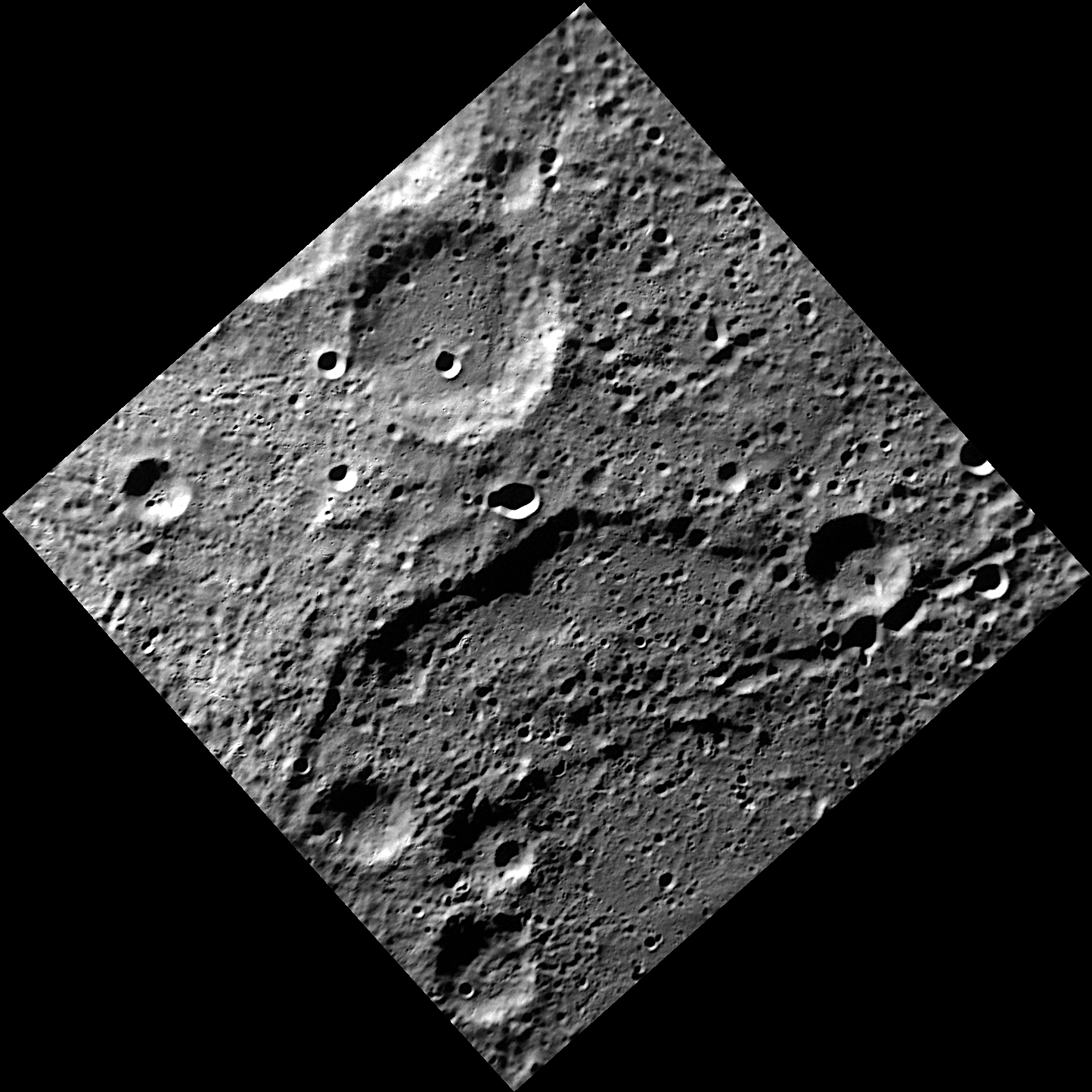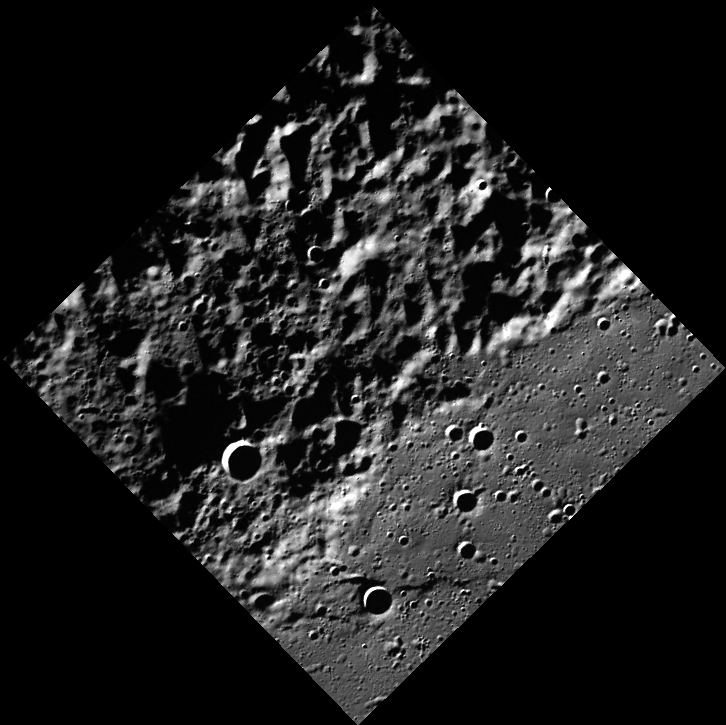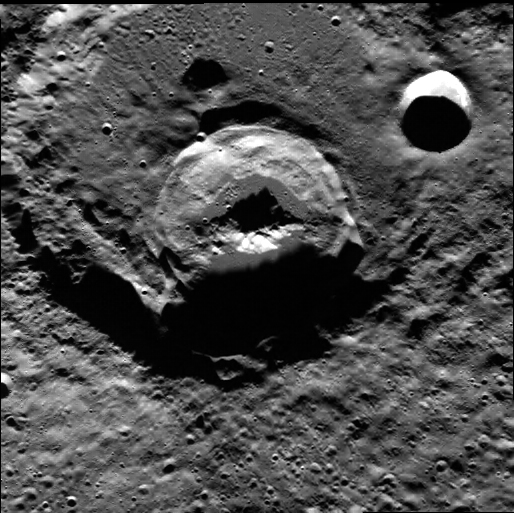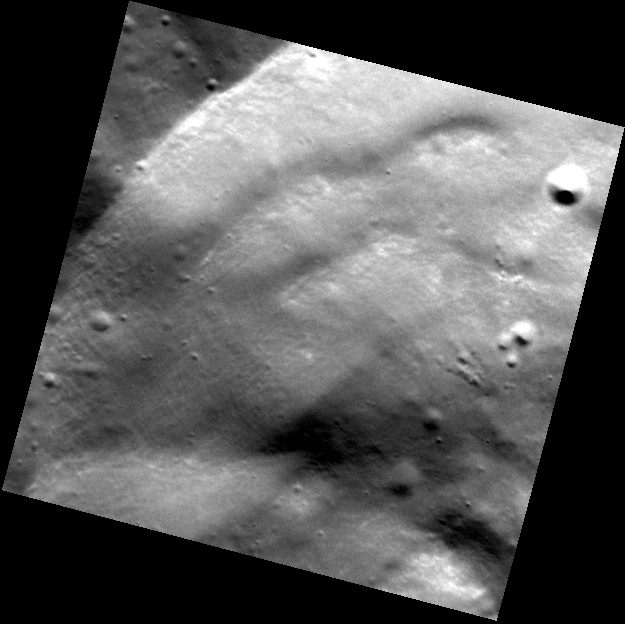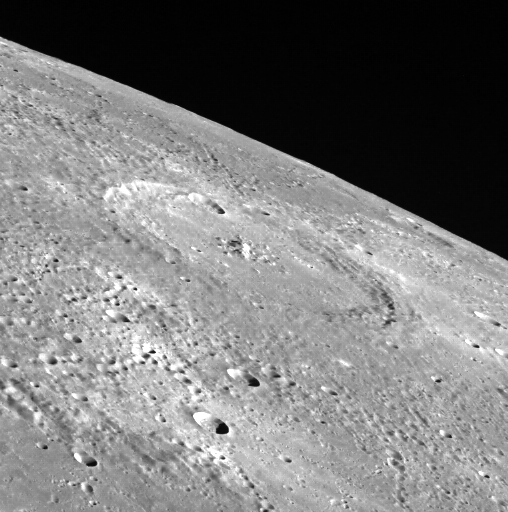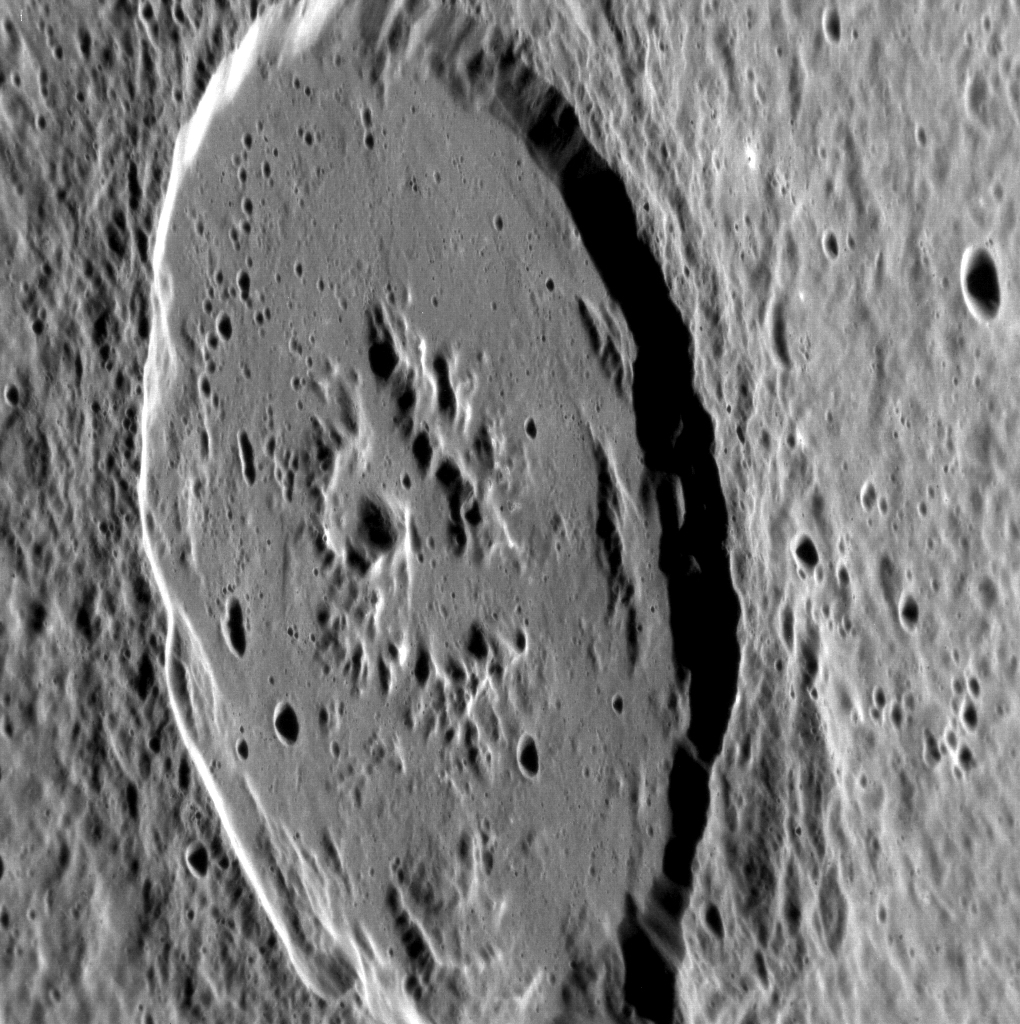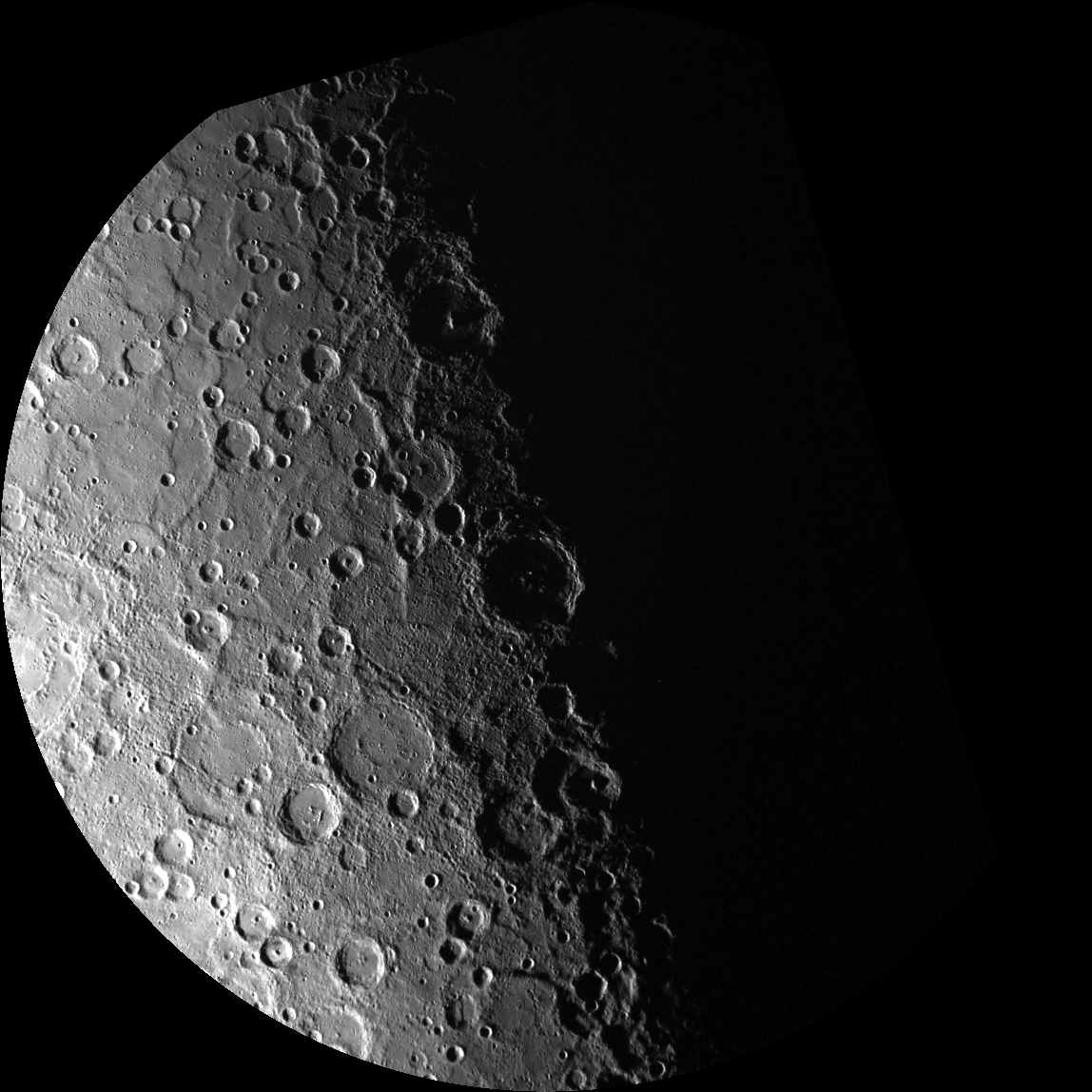Mercury Photos from NASA's Messenger Probe - Part 2 (April 2011 through 2012)
Tilting at Craters
The rim of the double-ring basin Cervantes cuts through the middle of this NAC image, taken May 26, 2011. Cervantes has a diameter of 213 kilometers and was named in honor of the Spanish novelist, playwright, and poet Miguel de Cervantes (1547-1616), best known for his novel Don Quixote.
Only a Northern Terrain
This image, taken on May 22, 2011, reveals previously unseen terrain near Mercury's north pole. There is a sharp boundary between smooth and rough terrain, but without seeing the neighboring areas, the boundary is difficult to interpret. Mosaicking this image with surrounding images will allow MESSENGER scientists to understand the geology of this region.
All Ages Craters
The craters in this scene, taken May 22, 2011, span a variety of degradation states. The sharp-looking crater near the center of the image has not undergone significant infilling or degradation, unlike the larger craters to the south. Its appearance indicates that it is relatively younger than these larger craters.
Three Craters Are Better Than One
This spectacular image, taken on May 20, 2011, includes three large craters, approximately 12 km, 30 km, and 70 km in diameter. The largest crater is the oldest of the three, with the other two superposed on top of it. The 30-km-diameter crater exhibits a very interesting and unusual central peak structure.
Lovely Crater Wall Slumps
This high-resolution image, taken on May 21, 2011, of a crater wall shows several slumps that occurred after the 20-km-diameter crater formed. The bottom-right corner of this image is located inside of the crater, and the upper-left corner is located outside of the crater rim.
Verdi Steals the Show
This June 3, 2011 view off the limb of Mercury provides a unique oblique view of the crater Verdi. Topographic variation can be seen along Mercury's limb.
Another Look at Atget
At a diameter of 100 km, the crater Atget is one of the largest craters within the Caloris basin. This targeted NAC, acquired on May 10, 2011, observation provides our first high-resolution view of Atget's low-reflectance floor and ejecta, which were likely excavated from beneath the surficial plains when Atget formed.
Breaking space news, the latest updates on rocket launches, skywatching events and more!
South Pole - Take 15
This WAC image, taken on May 4, 2011, is shown in a polar stereographic projection, with the south pole at the center, 0° longitude at the top, and 90° E longitude to the right. The image extends to -70° latitude in all directions. This image is the 15th of 89 total WAC images planned in support of MDIS's south polar monitoring campaign.
One of MDIS's imaging campaigns is to monitor the south polar region of Mercury. By imaging the polar region every four MESSENGER orbits as illumination conditions change, features that were in shadow on earlier orbits can be discerned and any permanently shadowed areas can be identified after repeated imaging over one solar day.
Mercury, as Seen in High Resolution
As the MESSENGER spacecraft sped over Mercury's north polar region on April 5, 2011, the NAC captured this image in very high resolution. This area is located north of Hokusai.
Bek and Lermontov
Pictured here are two named craters, Bek (32 km in diameter) and Lermontov (166 km in diameter) as seen on April 5, 2011. Bek's beautiful rays are indicative of its relative youth; Lermontov's floor is a suspected site of explosive volcanism, with irregular depressions and a distinct color signature.

Space.com is the premier source of space exploration, innovation and astronomy news, chronicling (and celebrating) humanity's ongoing expansion across the final frontier. Originally founded in 1999, Space.com is, and always has been, the passion of writers and editors who are space fans and also trained journalists. Our current news team consists of Editor-in-Chief Tariq Malik; Editor Hanneke Weitering, Senior Space Writer Mike Wall; Senior Writer Meghan Bartels; Senior Writer Chelsea Gohd, Senior Writer Tereza Pultarova and Staff Writer Alexander Cox, focusing on e-commerce. Senior Producer Steve Spaleta oversees our space videos, with Diana Whitcroft as our Social Media Editor.
